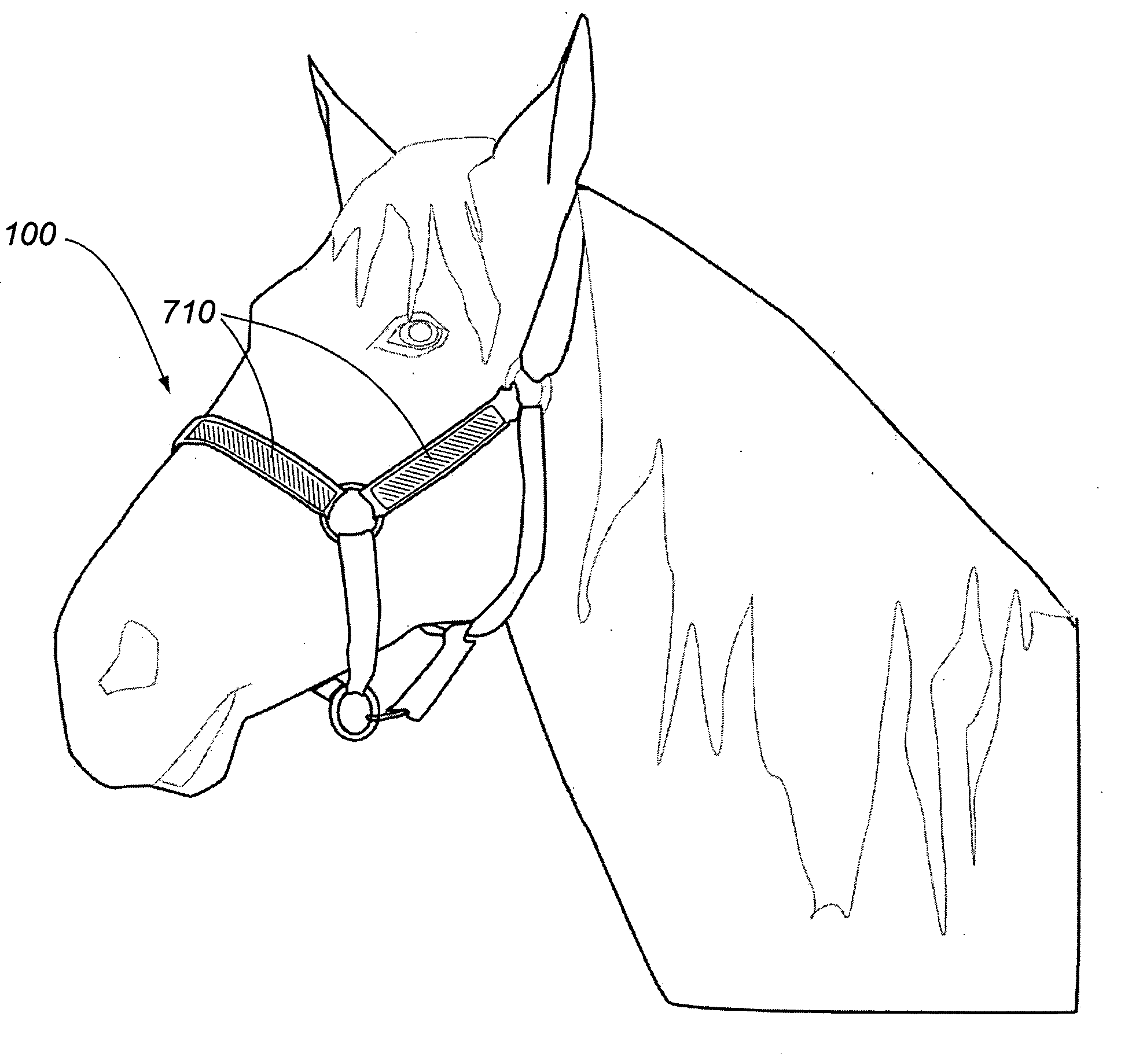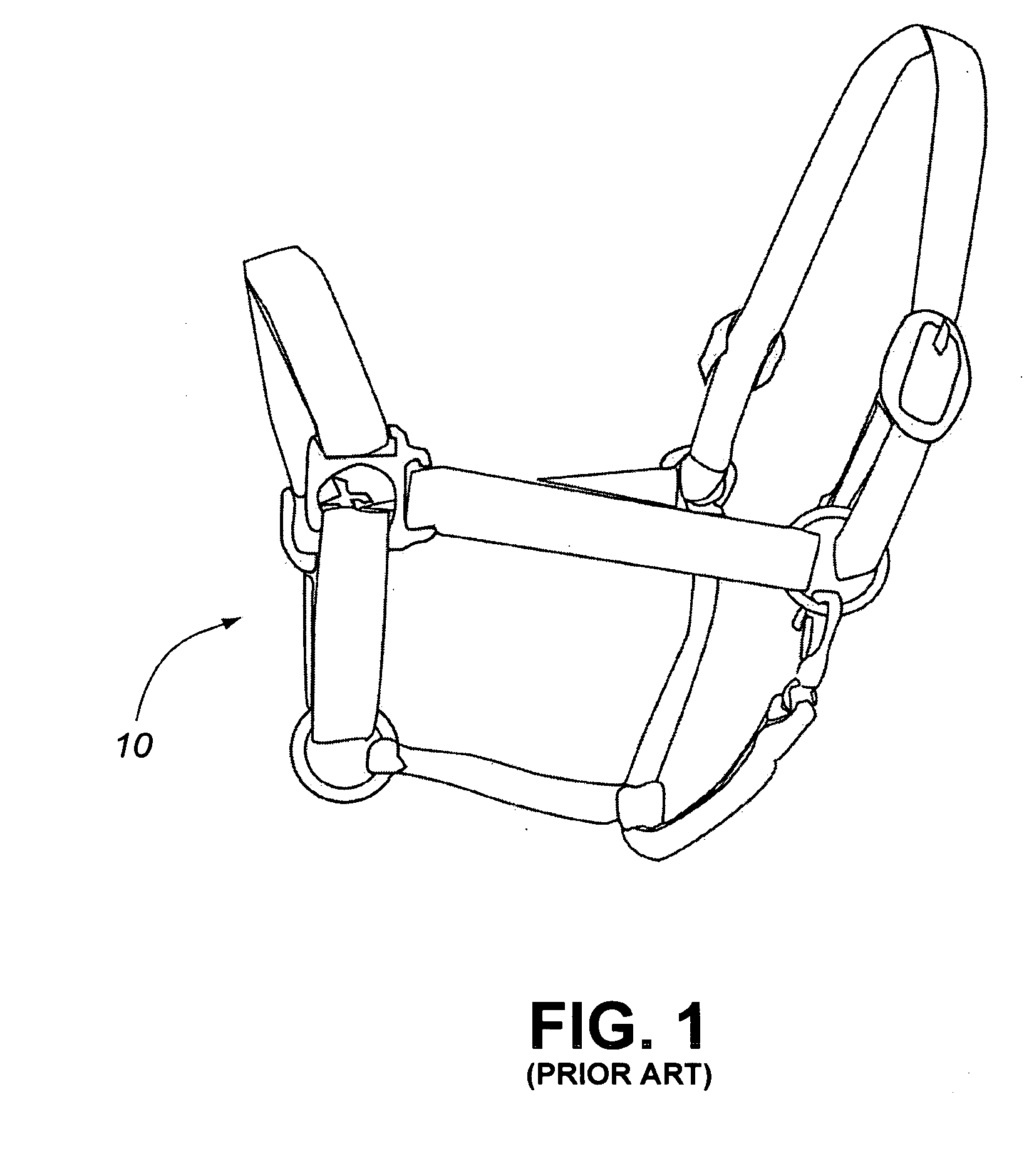Continuous duty equine halter
a technology for equine halters and halters, applied in the field of equine halters, can solve the problems of avoiding capture for a considerable period of time, elusive and evading capture, loss of revenue for owners, etc., and achieve the effect of reducing the possibility of injury or death
- Summary
- Abstract
- Description
- Claims
- Application Information
AI Technical Summary
Benefits of technology
Problems solved by technology
Method used
Image
Examples
Embodiment Construction
[0043] The present invention relates to a safety halter for equine animals, for example horses, that can be used continuously and for numerous activities including trailering, training, working and grazing while reducing the danger of injuring the horse resulting from chafing, bruising and ensnarement. FIG. 3 illustrates an example halter 100 according to the present invention a worn by a horse.
[0044] The expression “halter component” includes the major elements of the halter including halter pieces such as upper nose band, lower nose band, crown piece, throat latch, left and right cheek pieces and connecting elements such as connecting rings.
[0045] The expression “circuit” refers to a chain of halter components that form a closed loop and that presents a danger that the horse can become ensnared or restrained by the closed loop. A closed loop is a chain or connected sequence of two or more components in which the first halter component is also connected to the last halter compone...
PUM
 Login to View More
Login to View More Abstract
Description
Claims
Application Information
 Login to View More
Login to View More - R&D
- Intellectual Property
- Life Sciences
- Materials
- Tech Scout
- Unparalleled Data Quality
- Higher Quality Content
- 60% Fewer Hallucinations
Browse by: Latest US Patents, China's latest patents, Technical Efficacy Thesaurus, Application Domain, Technology Topic, Popular Technical Reports.
© 2025 PatSnap. All rights reserved.Legal|Privacy policy|Modern Slavery Act Transparency Statement|Sitemap|About US| Contact US: help@patsnap.com



